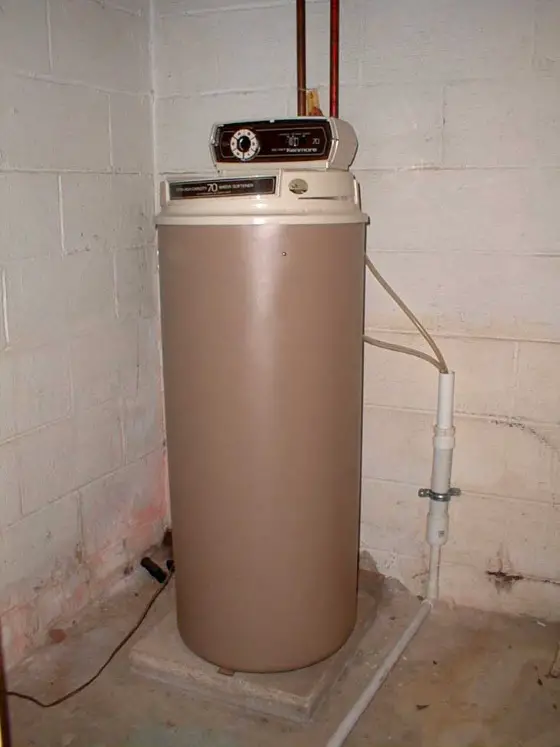Magnetic Water Softeners

Magnetic Water Softeners
DEAR TIM: Our drinking water is hard. It tests out at 18 grains. Water spots and scale are a big problem. I realize that water softeners can take care of this problem, but I don't want the hassle, salt, or expense of a traditional water softener system. Has traditional water softening technology improved? What about those magnetic or electronic water softening devices? Are they an acceptable alternative? Kit R. Boulder, CO
DEAR KIT: I am surprised sand doesn't flow from your water pipes. Your water hardness reading is practically off the chart. Blame Mother Nature for this. The rainfall she provides absorbs carbon dioxide as it travels towards the ground. This makes the rain slightly acidic. When the acidic rainwater enters the ground, it actually dissolves tiny rock particles. Typically, calcium and magnesium end up in the water. Some parts of the nation, the Pacific Northwest, the North Atlantic coastal states, and the Southeast coastal states excluding Florida, have naturally occurring soft water.
Water hardness is measured by calculating the amount of dissolved sediment in the water. A grain of hardness is equal to 1/7000th of a pound. Generally speaking, water contain 3.5 or more grains per gallon is considered hard. Water that contains greater than 10.5 grains is considered extremely hard.
Hard water can cause all sorts of problems. It causes unsightly water spots on polished faucets, stainless steel sinks, shower doors, and on freshly washed cars. These pesky water marks can often be cleaned by using a solution of white vinegar and water, but they can be totally eliminated if you manufacture soft water in your home. Hard water also makes it more difficult to clean clothes.
The traditional method of softening water is a simple chemical reaction. Calcium and magnesium are removed from the water as it passes through a filtering media that contains millions of sodium ions. The sodium comes from highly purified salt that is stored in a container next to the filtering media tanks. The hard water minerals are attracted to the filter and the sodium ions take their place in the water. The amount of salt in the water is minuscule and many people cannot taste it, although some people do detect its presence. Those people who must restrict the amount of salt in their diet can have a separate water line installed to the kitchen sink. This water tap provides regular hard water and should be used for drinking and cooking.
You can minimize the costs of softening water by only using it where you need it. The water lines that serve outdoor hose bibs used to water plants should deliver hard, not soft water. A separate hose bib installed near the garage piped into the soft water system is perfect for use when you wash and rinse your car. Cold water that enters your water heater should definitely be soft. Heat causes the hard water minerals to build scale faster. The use of soft water in water heaters can actually prolong a heater's life thus saving you money. In addition, hard water scale deposits can form rapidly on the bottom of water heater tanks. This scale slows heat transfer and causes you to spend more money to heat water day in and day out.
You can buy traditional water softeners that operate totally on water pressure. Many conventional softeners require electricity to complete the regeneration process that flushes the collected hard water chemicals from the softening system. The water powered softeners also do not waste salt. They only regenerate when there is a need. Most other systems operate on a timer and may waste salt and electricity when regeneration is not actually required.
Magnetic and electronic descaling devices being sold for home use are still relatively new technology. These devices do not remove anything from the water. The manufacturers claim they stop scale from forming by imparting an electrical charge on the hard water ions as they pass through a magnetic or electronic field. This technology has a track record of acceptable performance in the industrial and commercial water treatment arena where they can be carefully installed and the systems can be matched to the incoming water temperature, flow rates through the piping, the amount of water hardness, and the water chemical composition. A residential magnetic or electronic device may work in one house but not another because of these variables.
Standard high voltage electric cables (208/220/240V) that are in almost every residential home can cause interference with the performance of these devices. If a high voltage line is within 36 inches of any water line that has contains treated and energized water, the electromagnetic field created by the high voltage line will interfere and possibly reverse the effects of the treatment device. The Water Quality Association has formed a special task force that began looking into magnetic and electronic descaling products in 1999.
| WQA Magnetics Task Force Report: In March of 2001, the Water Quality Association (http://www.wqa.org) published a two-year study called the "WQA Magnetics Task Force Report." The report detailed 34 of 106 scientific test results on magnetic water treatment that met the task force's scientific criteria. They concluded that many of these magnetic processes were valid and worked to soften water, but in order to spread the technology more research is required and the industry should be held to a certification standard concerning water treatment. |
Column 311